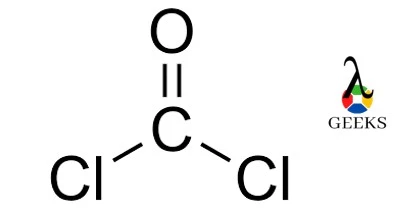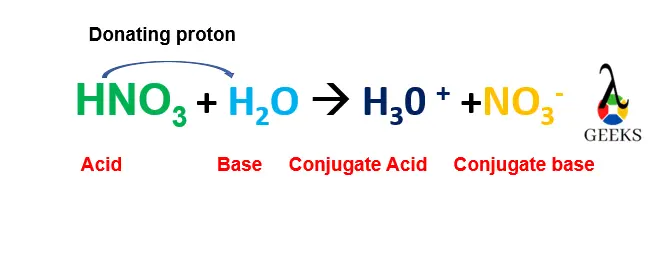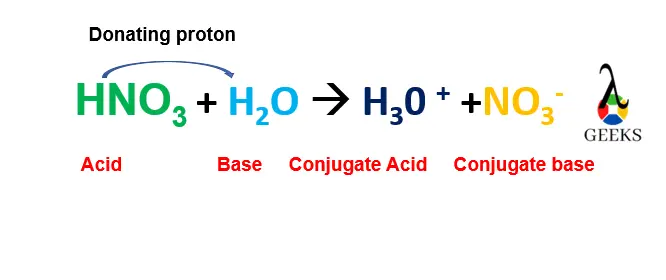Phosgene is a highly toxic chemical compound with the molecular formula COCl2. It is a colorless gas at room temperature and has a pungent odor similar to that of freshly cut grass. Phosgene is primarily used in the production of various industrial chemicals, such as plastics, pesticides, and dyes. It is also a key component in the manufacturing of foam materials, such as polyurethane. Despite its widespread use, phosgene poses significant health risks to humans and animals. Inhalation of phosgene gas can cause severe respiratory distress, leading to lung damage and even death. Exposure to phosgene can also result in skin and eye irritation, as well as long-term health effects. Due to its hazardous nature, strict safety measures and protocols must be followed when handling and storing phosgene. In this article, we will explore the properties of phosgene, its uses, and the associated health risks.
Key Takeaways
| Property | Value |
|---|---|
| Chemical formula | COCl2 |
| Molar mass | 98.92 g/mol |
| Appearance | Colorless gas |
| Odor | Pungent smell |
| Melting point | -130.8 °C |
| Boiling point | 8.3 °C |
| Density | 1.432 g/cm3 |
| Solubility | Reacts with water |
| Toxicity | Highly toxic |
| Uses | Chemical warfare agent, industrial chemical |
Identification of Phosgene
Phosgene is a chemical compound that is widely known for its toxic properties. It is a colorless gas with a suffocating odor and has various industrial applications. However, it gained notoriety as a chemical warfare agent during World War I. In this section, we will explore the identification of phosgene, including its chemical formula, CAS number, chemical classification, and molar mass.
Chemical Formula and IUPAC Name

The chemical formula of phosgene is COCl2, which indicates that it consists of one carbon atom (C), one oxygen atom (O), and two chlorine atoms (Cl). The International Union of Pure and Applied Chemistry (IUPAC) name for phosgene is carbonyl dichloride. This name reflects the presence of the carbonyl group (C=O) and the two chlorine atoms in the molecule.
CAS Number and ChemSpider ID
Phosgene is assigned a unique identification number called the CAS number, which stands for Chemical Abstracts Service. The CAS number for phosgene is 75-44-5. This number helps in the accurate identification and classification of chemicals. Additionally, phosgene has a ChemSpider ID of 1020, which is a unique identifier in the ChemSpider database.
Chemical Classification and Molar Mass
Phosgene falls under the category of a chemical compound known as a carbonyl halide. Carbonyl halides are organic compounds that contain a carbonyl group (C=O) and a halogen atom. In the case of phosgene, the halogen atom is chlorine (Cl). The molar mass of phosgene is approximately 98.92 grams per mole. This value is calculated by adding the atomic masses of carbon (C), oxygen (O), and chlorine (Cl) in the molecule.
Phosgene Structure and Properties
Phosgene is a chemical compound with the chemical formula COCl2. It is a toxic gas that is widely known for its industrial applications and its historical use as a chemical warfare agent during World War I. In this section, we will explore the structure and various properties of phosgene.
Molecular Structure and Covalent Bond Length
Phosgene has a unique molecular structure consisting of one carbon atom (C) bonded to two oxygen atoms (O) and one chlorine atom (Cl). The carbon atom is double-bonded to one of the oxygen atoms and single-bonded to the other oxygen atom and the chlorine atom. This arrangement gives phosgene its chemical formula COCl2.
The covalent bond length in phosgene is an important factor in understanding its properties. The carbon-oxygen double bond is shorter than the carbon-oxygen single bond, while the carbon-chlorine bond is longer. This difference in bond lengths affects the reactivity and stability of phosgene.
Electron Configurations and Oxidation State
The electron configuration of phosgene is determined by the arrangement of electrons in its constituent atoms. The carbon atom has an electron configuration of 1s2 2s2 2p2, while the oxygen atoms have configurations of 1s2 2s2 2p4 and the chlorine atom has a configuration of 1s2 2s2 2p6 3s2 3p5.
In terms of oxidation state, the carbon atom in phosgene has an oxidation state of +4, while the oxygen atoms have an oxidation state of -2 and the chlorine atom has an oxidation state of -1. These oxidation states reflect the electron transfer and sharing that occurs in the formation of covalent bonds within the molecule.
Polarity and Conductivity
Phosgene is a polar molecule due to the unequal distribution of charge caused by the difference in electronegativity between the carbon, oxygen, and chlorine atoms. The oxygen atoms are more electronegative than the carbon and chlorine atoms, resulting in a partial negative charge on the oxygen atoms and a partial positive charge on the carbon and chlorine atoms.
The polarity of phosgene affects its conductivity. In its pure form, phosgene is a non-conductor of electricity. However, when dissolved in water, it undergoes hydrolysis to form carbon dioxide and hydrochloric acid, which can conduct electricity due to the presence of ions.
Crystal Structure and Viscosity
Phosgene has a crystal structure that belongs to the monoclinic crystal system. The arrangement of atoms in the crystal lattice contributes to the physical properties of phosgene, including its melting point, boiling point, and viscosity.
Phosgene has a low melting point of -130.8 degrees Celsius and a boiling point of 8.3 degrees Celsius. It is a volatile substance that readily evaporates into a gas at room temperature. The viscosity of phosgene is relatively low, meaning it flows easily.
Preparation and Properties of Phosgene
Phosgene is a chemical compound that is widely known for its toxic properties. It is a colorless gas with a suffocating odor and has various industrial applications. However, it gained notoriety as a chemical warfare agent during World War I. In this section, we will explore the preparation and properties of phosgene, including its method of preparation, physical properties, chemical reactions, and its interaction with ammonia.
Method of Preparation
Phosgene is primarily prepared by the reaction of carbon monoxide (CO) with chlorine (Cl2). This reaction takes place in the presence of a catalyst, such as activated carbon or iron chloride. The chemical equation for the formation of phosgene is as follows:
CO + Cl2 → COCl2
The reaction is exothermic and typically carried out at temperatures ranging from 50 to 150 degrees Celsius. It is important to note that the preparation of phosgene should only be conducted by trained professionals in a controlled environment due to its high toxicity.
Physical Properties
Phosgene is a gas at room temperature and is colorless, making it difficult to detect without proper equipment. It has a boiling point of -7.3 degrees Celsius and a melting point of -118.3 degrees Celsius. Phosgene is slightly soluble in water and has a density of 1.432 grams per cubic centimeter. It has a vapor pressure of 221 millimeters of mercury at 20 degrees Celsius.
Chemical Reactions with Acid, Base, and Oxide
Phosgene is a highly reactive compound and can undergo various chemical reactions. When phosgene reacts with an acid, such as hydrochloric acid (HCl), it forms carbon dioxide (CO2) and releases chlorine gas (Cl2). The reaction can be represented as follows:
COCl2 + 2HCl → CO2 + 2Cl2 + H2O
In the presence of a base, such as sodium hydroxide (NaOH), phosgene reacts to form carbonate ions (CO3^2-) and chloride ions (Cl^-). The reaction can be represented as follows:
COCl2 + 2NaOH → CO3^2- + 2Cl^- + H2O
When phosgene reacts with an oxide, such as carbon monoxide (CO), it forms a cyclic compound called phosgene oxide. The reaction can be represented as follows:
COCl2 + CO → (COCl)2O
Phosgene Hydrates and Reaction with Ammonia
Phosgene can also form hydrates when exposed to water. These hydrates are solid compounds that contain water molecules. Phosgene hydrates are highly unstable and can decompose explosively when heated or subjected to mechanical shock.
When phosgene reacts with ammonia (NH3), it forms a series of compounds known as urethanes. These compounds have various industrial applications, including the production of plastics and pharmaceuticals. The reaction between phosgene and ammonia is as follows:
COCl2 + 2NH3 → NH2CO2NH4 + NH4Cl
It is important to handle phosgene with extreme caution due to its acute toxicity and potential to cause severe damage to the respiratory system. Safety precautions, such as wearing appropriate personal protective equipment (PPE) and working in a well-ventilated area, should always be followed when dealing with phosgene.
Phosgene Poisoning and Health Effects
Phosgene gas is a highly toxic chemical compound that poses significant health hazards to humans. It gained notoriety as a chemical warfare agent during World War I, but it also has several industrial applications. Despite its colorless appearance and suffocating odor, phosgene gas can cause severe damage to the respiratory system and other vital organs when inhaled or exposed to the skin.
Toxicity of Phosgene Gas
Phosgene gas, with the chemical formula COCl2, is formed by the reaction of carbon monoxide (CO) and chlorine (Cl2). It is highly reactive and can undergo various chemical reactions in the presence of water and air. This stability allows it to persist in the environment, making it a persistent threat.
The acute toxicity of phosgene gas is primarily attributed to its ability to damage the lungs. When inhaled, it can cause irritation and inflammation of the respiratory tract, leading to pulmonary edema (fluid accumulation in the lungs) and severe lung damage. The severity of the symptoms depends on the concentration and duration of exposure.
Effects on the Body and Symptoms of Exposure
Exposure to phosgene gas can have immediate and delayed effects on the body. Initially, individuals may experience symptoms such as coughing, chest pain, shortness of breath, and a burning sensation in the throat. These symptoms can progress rapidly, leading to difficulty breathing, blue lips or fingertips (cyanosis), and even loss of consciousness.
In some cases, the symptoms of phosgene exposure may not manifest immediately. Delayed effects can occur within 24 to 72 hours after exposure and may include fever, chest tightness, and a persistent cough. It is crucial to seek medical attention promptly if you suspect exposure to phosgene gas, even if symptoms are not immediately apparent.
Decontamination and Treatment of Phosgene Exposure
If you or someone else has been exposed to phosgene gas, it is essential to prioritize decontamination and seek medical assistance immediately. Decontamination involves removing contaminated clothing and thoroughly washing the affected areas with copious amounts of water. It is crucial to avoid contact with the skin and eyes during this process.
Medical treatment for phosgene exposure focuses on managing the symptoms and providing supportive care. Oxygen therapy, bronchodilators, and medications to reduce inflammation may be administered to alleviate respiratory distress. In severe cases, individuals may require hospitalization and specialized treatment, including mechanical ventilation.
Differential Diagnosis and Clinical Vulnerabilities
Diagnosing phosgene poisoning can be challenging, as its symptoms can mimic those of other respiratory conditions. Medical professionals must consider the individual’s history of exposure, clinical presentation, and relevant diagnostic tests to differentiate phosgene poisoning from other illnesses.
Certain populations may be more vulnerable to the effects of phosgene gas, including individuals with pre-existing respiratory conditions such as asthma or chronic obstructive pulmonary disease (COPD). Additionally, children and the elderly may be at higher risk due to their reduced physiological reserves and weaker immune systems.
Phosgene Price and Production
Phosgene is a chemical compound that is widely used in various industries for its versatile properties. In this section, we will explore the market price and availability of phosgene, as well as its industrial uses and applications. We will also delve into the manufacturing processes of polyurethanes, polycarbonate plastics, and agricultural chemicals, which heavily rely on phosgene.
Market Price and Availability
Phosgene is a highly sought-after chemical due to its significance in industrial applications. As a result, its market price and availability can vary depending on supply and demand dynamics. The price of phosgene is influenced by factors such as production costs, raw material availability, and market competition.
Given its toxic nature, phosgene is produced and handled with utmost care and stringent safety measures. This contributes to the cost of production, which in turn affects its market price. Additionally, the availability of raw materials required for phosgene production can impact its overall supply and, consequently, its price.
Industrial Uses and Applications
Phosgene finds extensive use in various industries due to its unique properties. It is primarily employed in the production of polyurethanes, polycarbonate plastics, and agricultural chemicals.
Polyurethanes
Polyurethanes are widely used in the manufacturing of foams, adhesives, coatings, and elastomers. Phosgene plays a crucial role in the production of polyurethane precursors, known as isocyanates. Isocyanates are essential components in the synthesis of polyurethanes, providing them with their desirable properties such as flexibility, durability, and thermal resistance.
Polycarbonate Plastics
Phosgene is also utilized in the production of polycarbonate plastics, which are known for their high impact strength, transparency, and heat resistance. Polycarbonate plastics find applications in various industries, including automotive, electrical, and construction. Phosgene is involved in the reaction that forms the polymer backbone of polycarbonate, making it an integral part of the manufacturing process.
Agricultural Chemicals
In the agricultural sector, phosgene is used in the production of certain pesticides and herbicides. These chemicals play a crucial role in protecting crops from pests and weeds, ensuring higher yields and improved crop quality. Phosgene-based agricultural chemicals are designed to be effective against specific pests while minimizing harm to the environment.
Manufacturing of Polyurethanes, Polycarbonate Plastics, and Agricultural Chemicals
The manufacturing processes of polyurethanes, polycarbonate plastics, and agricultural chemicals involve the use of phosgene. Let’s take a closer look at each process:
-
Polyurethanes: The production of polyurethanes starts with the reaction between a polyol and an isocyanate. Phosgene is used to produce the isocyanate component, which is then reacted with the polyol to form polyurethane. This reaction can occur in various forms, such as a one-shot process or a prepolymer process, depending on the desired end product.
-
Polycarbonate Plastics: The synthesis of polycarbonate plastics involves the reaction between bisphenol A and phosgene. This reaction forms a polymer chain, resulting in the formation of polycarbonate. The process requires careful control of temperature and reaction conditions to ensure the desired molecular weight and properties of the final product.
-
Agricultural Chemicals: Phosgene is used in the production of certain agricultural chemicals, such as herbicides and pesticides. The exact manufacturing process can vary depending on the specific chemical being produced. However, phosgene is typically involved in the synthesis of key intermediates or active ingredients that provide the desired pesticidal or herbicidal properties.
Frequently Asked Questions
Identification
Q: What is phosgene?
A: Phosgene is a toxic gas that is colorless and has a suffocating odor. It is a chemical compound commonly used in industrial applications and was also used as a chemical warfare agent during World War I.
Q: What is the chemical formula of phosgene?
A: The chemical formula of phosgene is COCl2, which indicates that it consists of one carbon atom, one oxygen atom, and two chlorine atoms.
Q: What are the physical properties of phosgene?
A: Phosgene is a colorless gas with a boiling point of -7.3°C and a melting point of -118.3°C. It is soluble in organic solvents but has low solubility in water. It has a density of 3.4 g/L and a vapor pressure of 221 mmHg at 20°C.
Exposure and Health Hazards
Q: How does phosgene gas affect the body?
A: Phosgene gas can cause severe damage to the respiratory system. When inhaled, it reacts with water in the lungs to produce hydrochloric acid, leading to lung damage. It has acute toxicity and can be fatal even at low concentrations.
Q: Is phosgene poisonous?
A: Yes, phosgene is highly poisonous. It acts as a respiratory irritant and can cause severe lung damage. Exposure to high concentrations of phosgene can be lethal.
Q: What are the health hazards associated with phosgene exposure?
A: Phosgene exposure can result in respiratory distress, coughing, chest pain, pulmonary edema, and even death. It is important to take safety precautions to avoid exposure.
Decontamination and Treatment
Q: How to decontaminate after exposure to phosgene?
A: If exposed to phosgene, decontamination should be done immediately. Remove contaminated clothing and rinse the affected area with copious amounts of water. Seek medical attention promptly.
Q: What is the treatment for phosgene exposure?
A: Treatment for phosgene exposure involves providing supportive care to the affected individual. This may include oxygen therapy, bronchodilators, and monitoring for any complications.
Chemical Exposures and Reactions
Q: What produces phosgene gas?
A: Phosgene gas can be produced by the reaction of carbon monoxide (CO) with chlorine (Cl2) in the presence of a catalyst.
Q: How is phosgene made?
A: Phosgene can be synthesized by reacting carbon monoxide with chlorine gas using a catalyst such as activated carbon or metal oxides.
Q: When are phosphodiester bonds formed?
A: Phosphodiester bonds are formed during the process of DNA replication and RNA synthesis. They link nucleotides together to form the backbone of these molecules.
Vulnerabilities and Safety Precautions
Q: What are the vulnerabilities associated with chemical exposures?
A: Chemical exposures can pose various vulnerabilities to human health, including respiratory system damage, acute toxicity, and other health hazards. Proper safety precautions should be taken to minimize these risks.
Q: How does Phosguard work?
A: Phosguard is a chemical filtration media used in aquariums to remove phosphates. It works by binding and removing excess phosphates from the water, helping to maintain water quality.
Exposures and Solubility
Q: What are chemical exposures to phosgene?
A: Chemical exposures to phosgene occur when individuals come into contact with this toxic gas, either through inhalation or skin contact. Such exposures can have serious health consequences.
Q: What is the solubility of phosgene?
A: Phosgene has low solubility in water but is soluble in organic solvents. This characteristic affects its distribution and behavior in different environments.


